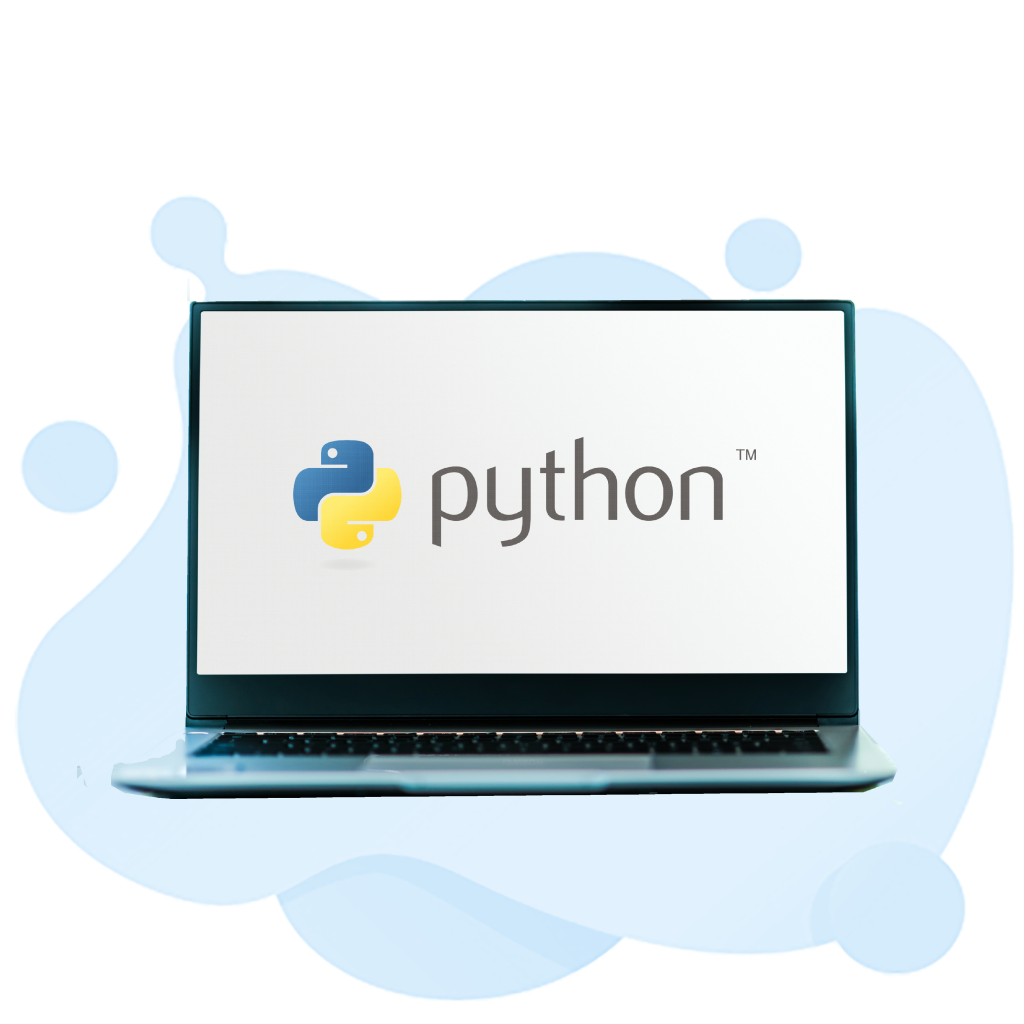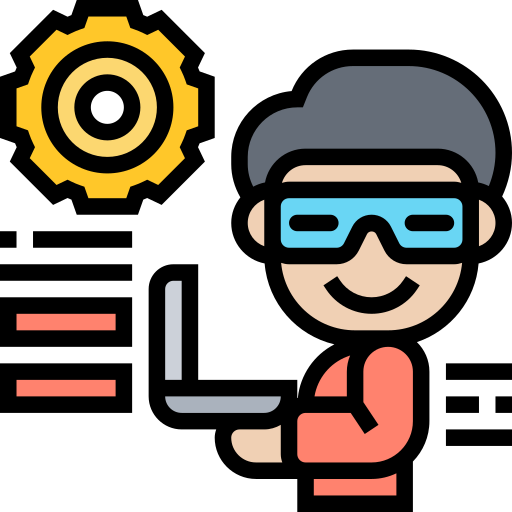Applied Data Science With Python Specialization Certification 2023

Data Science with Python Certification is a comprehensive program for professionals seeking to become proficient in the python programming language and the skills necessary for data analytics. It teaches you how to use popular python libraries for data wrangling, mathematical computing and information visualization.
You will learn how to import, clean and wrangle data, perform exploratory data analysis, create meaningful data visualizations and build predictive models & pipelines. You will also strengthen your ML foundations and develop an understanding of AI algorithms.
Free Data Science with Python Certification Practice Test Online
Data Science With Python
Python is a programming language that is very popular among data science enthusiasts. This is because it has a much shorter learning curve than other languages and is easy to understand. It also has a huge community, which means that you will always find new libraries and features to help you with your work.
Another advantage of Python is that it is a dynamically typed language, which means that you do not have to explicitly declare the types of variables. This makes it easier to write and read. In addition, Python has a lot of powerful libraries that focus on data science-related operations.
This program will teach you everything you need to start doing real-world data science projects using Python and the latest related tools and techniques. It is a great kickstarter for aspiring data scientists without extensive software skills. It will give you a solid understanding of data visualization, numeric computation, web scraping, and natural language processing. In addition, you will learn how to use the latest machine learning algorithms in python.
Data Science With Python by Henry Lopez
Python is one of the world’s most popular programming languages and is used in a wide range of fields. This program will teach you how to use Python for data science projects, preparing you for the skills needed to succeed in this field. You’ll gain hands-on experience with the Pandas, NumPy, and Matplotlib libraries as you learn fundamental data science techniques and work on small Python projects.
Throughout this course, you’ll explore different types of machine learning algorithms and apply them to real-world problems. You’ll also use Jupyter Notebooks to practice your coding and build predictive models using the popular scikit-learn library. This program prepares you for the PCAD Certified Associate in Data Analytics with Python certification exam.
This book is an excellent resource for beginners looking to get started with Python for data science and machine learning. It doesn’t assume any prior coding knowledge and offers thorough explanations of the most popular Python data science libraries like NumPy, Pandas, and Scikit-Learn. The author also encourages readers to take the time to really understand these libraries, instead of simply memorizing functions.

Python Data Science Handbook Essential Tools for Working With Data
The Python Data Science Handbook Essential Tools is an excellent resource for learning the basics of Python and how to use it with important data science tools. It covers the key components of a data scientist’s workflow including NumPy, Pandas and Matplotlib. It also covers several machine learning algorithms like linear and logistic regression. The book is available in both printed and digital form and is an excellent choice for any aspiring data scientist.
In the first chapter of the Python Data Science Handbook, you’ll learn about the basics of the language and how to use the IPython shell and Jupyter notebooks. It also includes tips for debugging your code and keyboard shortcuts to speed up your work. The next chapter focuses on the NumPy package and its benefits to data manipulation. It then explains the different data structures in Python, such as arrays and matrices. It then discusses how to manipulate data with Pandas, introducing topics such as series and dataframes.
The final chapters in the Python Data Science Handbook include a deep dive into machine learning. They cover several of the most popular Python libraries for machine learning, including Scikit-learn and Keras. The book also teaches you how to utilize TensorFlow, an open-source machine learning framework developed by Google.
Data Science Projects With Python
Data science is an interdisciplinary field that requires software engineering, basic math knowledge, and competency with programming. Python is an ideal language for aspiring data scientists without extensive software engineering experience, and its clean syntax provides readability that is not intimidating to non-programmers. It is also highly versatile with a robust selection of libraries that can perform the typical tasks required by data scientists.

With this course, you will learn to use Python for data analysis and build predictive models for solving real-world business problems. You will learn to prepare data sets, create meaningful visualizations, and communicate the results of your work to stakeholders. You will also acquire the skills needed to develop machine learning and deep learning models to support your analytical process. Noble Desktop’s courses are offered as bootcamps and certificate programs and can be taken live online or in-person. These programs offer a variety of perks, including verified certificates and free retakes within a year of graduation. See course listings for details.
Learn Data Science With Python
Data Science is one of the most in-demand functions in today’s business world. Whether it’s forecasting weather patterns, designing marketing campaigns, or studying protein structures in biology, solving complex data problems requires multidisciplinary skills in math, statistics, graphs, and programming. Python shines as a versatile, open-source language that addresses many of these needs.
With an intuitive syntax, abundance of third-party libraries, and a large community that’s ready to help, it’s no wonder Python is the most popular programming language in the world. This program will prepare you to use this powerful tool in your job by covering the end-to-end data science process including importing data, exploring it, visualizing it, analyzing it with statistics, and creating predictive machine learning models.
This online program is intended for technical professionals with existing data analysis or programming experience who want to boost their careers. It will provide you with the foundation and understanding of Python and data science necessary to advance your career. To get started, complete the brief program registration form. This will declare your intent to complete the program in five years or less, lock in your program requirements, and be assigned a mentor to help you on your path to success.

Applied Data Science With Python Specialization
The Applied Data science with Python Specialization offers a comprehensive training program for learners who want to master the basics of python programming and apply it to the world of data analysis. It covers the end-to-end process of extracting value from complex data sets, communicating those insights effectively through data visualizations, and developing predictive models that will address real-world problems.
This course provides a strong foundation for learning how to work with Python and its related tools, including numpy, pandas, matplotlib, scipy, and nltk. It is designed for beginners as well as experienced python users and includes core concepts such as data structures, functions, loops, conditions, web-scraping, and working with databases.
This course is part of the IBM Data science professional certification, so completing it can help you build street cred as a Python data scientist and get a leg-up on your competition when it comes to landing job opportunities. However, if you’re a beginner and don’t want to invest in an entire certificate program, Noble Desktop also offers a free, self-paced Python for Data Science, Web, and Core Programming Fast Track Program.
Practical Data Science With Python
Python is a programming language that combines power and ease of use. It is supported by a large community and a wealth of libraries, including popular analytics tools and frameworks such as NumPy, TensorFlow, Pandas, and Keras. Additionally, Python is open source, meaning that anyone can download and contribute code to the language. This makes it a more secure option than commercial languages that require licenses to be used.
This course offers a hands-on approach to learning the core skills of data science with Python. It covers fundamental python programming concepts, the IDE (Integrated Development Environment) Jupyter and its modern equivalent, Spyder, and key python library functions. You’ll also learn how to perform data analysis and visualization using python, along with the most important machine learning techniques.
You’ll explore regression models and classification models, and use essential python library functions such as pandas, NumPy, and matplotlib. You’ll even get an introduction to supervised learning with scikit-learn and apply these techniques to real-world data science problems. In addition, you’ll learn about important ethical concerns in the field of data science.
Programming for Data Science With Python
Python is the most popular programming language in the world and has quickly become the language of choice for data science. It has an easy-to-read syntax and a vast array of libraries that effortlessly support the end-to-end data science workflow.
As a result, it’s the most powerful tool for data scientists to use for building and analyzing models. But to make the most of your time, it is important to understand how Python works and how to leverage all its features.
Fortunately, there are many courses available that can teach you everything you need to get started. To begin, look for an introductory course on programming fundamentals such as those offered by Analytics Vidhya or Codecademy. Once you have a solid foundation in Python, it’s time to start applying your skills.
For example, you can apply your newfound knowledge of the language to explore datasets like the Titanic data set that contains over 2,000 passenger records including their gender, family members, cabin, ticket fare, and whether they survived the shipwreck. Or you can use your newfound skills to work with APIs and web scrapers to gather and consolidate data from various sources.
Lastly, you can use your Python skills to learn how to analyze and visualize data with the help of a few key libraries like Pandas, NumPy, Matplotlib, and Scikit-learn. Then you can use the data you have collected to build and test models.
Data Science with Python Questions and Answers
How to Learn Python in 2022:
- For Data Science using online tutorials and courses for study.
- Apply your understanding by taking part in coding challenges.
- Taking on tasks that will enhance your portfolio for data science.
Learners have a thorough understanding of data analytics tools & methodologies with this Data Science with Python training. Learning Python can assist you in developing skills in data analysis, visualization, NumPy, SciPy, web scraping, and NLP.
Since the field of data science is continually growing, it’s critical to keep up with the most recent developments in trends, methods, and libraries. It is crucial to becoming familiar with the Python programming language, comprehend Data Science concepts, install Python libraries, learn data manipulation techniques, master data visualization techniques, study statistical analysis, delve into machine learning algorithms, practice with actual data, join Data Science communities, and continue your education through books, online courses, tutorials, and blogs before beginning to use Python for Data Science. You may learn the fundamentals of important Data Science ideas by following these steps and getting started with Python-based Data Science.
R might be a good fit for you if you’re passionate about the statistical computation and data visualization aspects of data analysis. Python might be a better choice if, on the other hand, you’re interested in working as a data scientist and utilizing big data, artificial intelligence, and deep learning methods.